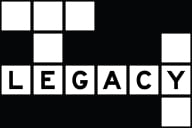You have /5 articles left.
Sign up for a free account or log in.
As news of the coronavirus outbreak erupted in January, the spring semester had just kicked off at my institution, Loyola University New Orleans. I held tight to my syllabus and rallied my students for a journey through the central dogma of molecular biology.
We were studying the flow of genetic information in cells, but it was impossible to ignore the deluge of information surrounding this new respiratory disease. Images of masked health-care workers, quarantines and the climbing casualty count drew attention to the faraway city of Wuhan, China. Meanwhile, the pathogenic virus dubbed SARS-CoV-2 masqueraded as asymptomatic baggage on airplanes and cruise ships. As we arranged our desks in a circle and discussed the classic experiments leading to a vaccine for bacterial pneumonia, the first U.S. COVID-19 patient disembarked at Seattle-Tacoma International Airport.
In February, my immune system and teaching portfolio were quite literally naïve to the virus. I felt compelled to teach the outbreak when it was seemingly distant and contained. I could draw the virus on the board, embellish it with crown-shaped proteins and sketch a genome of primitive RNA inside it. We could ponder the mechanisms of information transfer for a clever virus that hijacks cells to mass-produce itself. It felt like a timely topic to assign as class dispersed for Mardi Gras break.
The challenge of teaching an outbreak in real time is sifting through mountains of information to uncover the teachable gems. In the early weeks, social media was ablaze with sensationalist headlines, conspiracy theories and rapidly evolving statistics. Peer-reviewed studies were scarce, and I was searching for a primary study that laid out the early discovery process from the epicenter of the outbreak.
I settled on a preliminary report from a preprint server called BioRxiv (Bio Archive), “Discovery of a novel coronavirus associated with the recent pneumonia outbreak in humans and its potential bat origin.” The report was bulging with viral genome sequences from a handful of initial patients and sparkling with immunofluorescent images ripe for class discussion. While I was skeptical of science that had not yet been peer reviewed, I was also eager to highlight fast tracks for releasing data in the midst of a public health crisis. The introduction section referenced only 198 confirmed cases of COVID-19, so this study marked the early moments of the outbreak.
By the time we circled back for a class discussion in early March, a stark reality hit the marker board: the outbreak had escalated into a pandemic. “There is no point in listing out the countries,” a student protested. It was everywhere, including the United States. We did not linger on this point. Instead, we pivoted into a lively discussion about social media as it interfaces with public health.
The preliminary report we analyzed received modest attention online: 1,500 likes on Facebook, tweets in multiple languages and a handful of mentions on random blogs. Sifting through these social annotations hinted at a new mechanism for spreading science. Three different versions of the preliminary report were posted, each with its own series of online comments probing technical details and proposing theories about the origin of the virus.
The data were ultimately published in Nature, fast-tracked through peer review in just nine days. The median submission to acceptance time for this prestigious journal is over 200 days, a dangerously long time to withhold information at the start of an outbreak. Yet even during the expedited window of peer review, the number of confirmed cases jumped to 2,761 in China. Peer review would legitimize the study for the scientific community, but it would do little to halt the pandemic on its own.
Online news outlets have reported on COVID-19 more than two billion times since December 2019, while PubMed contains just over 1,000 indexed scientific papers on the topic. The imbalance between rapid-fire news and vetted scientific information creates a dangerous infodemic. Students reflected on ways that social media can interfere with public health messaging and international relations during a crisis. For example, a student pointed to troubling tweets claiming the virus was stolen from a lab in Canada. Another student called out a myth linking melanin and coronavirus immunity. After her analysis on Black Twitter, she shared, “It’s pretty frightening that it took the diagnoses of celebrities like Idris Elba to debunk this claim.” In a move to hold social media accountable for its role in the crisis, Democratic congressman Bobby Rush of Illinois confronted Facebook and Twitter CEOs and implored them to combat the spread of misinformation online.
Sensing the urgency of teaching in this moment, I loosened my grip on the syllabus and created classroom space for deconstructing the diagnostic tests. Using a table of patient symptoms and other data from the paper, students predicted which patients might harbor the virus and drew hypothetical results for the polymerase chain reaction test (PCR) on the board. They included the necessary controls and discussed why these controls were essential to interpret the data. The path from patient to diagnostic test seemed straightforward in this neatly packaged paper. In contrast, the implementation of robust testing procedures has been quite messy in the United States. Early test kits released by the CDC had problems with a key ingredient necessary to validate the test, the negative control. Now, shortages of test kits, swabs and masks threaten efforts to flatten the curve.
Nine days after bringing the science of the outbreak into the classroom, community spread in New Orleans was well documented. Perhaps the virus arrived during Mardi Gras season, a time when the city booms with tourism, parades and revelry. Colored toilet paper tossed from floats still clings to the live oaks along the parade route, a gaudy reminder of national resource shortages.
Our PCR gels were running on 200 volts in the lab when the announcement from President Tania Tetlow hit our devices. Like all other colleges in New Orleans, Loyola University New Orleans would immediately shift to remote learning for the rest of the spring semester. Within a matter of days, I needed to assume an online identity, ramp up remote teaching tools and build a home office. While difficult to swallow, this unprecedented social distancing experiment endeavors to protect our community and dampen the outbreak.
Amazingly, PCR was successful for every single student in the lab that afternoon: products in the right lanes and clean controls. This would be the equivalent of implementing a robust diagnostic test in the heat of an outbreak. It felt like my March Madness pick had just sunk 14 consecutive free throws to win the game, wearing lab coats and gloves.
We packed up pipettes and unplugged equipment. We perfected our hand-washing technique using Glo Germ solution and ultraviolet light. We vowed to do our part to scrub hidden germs from our hands and to spread only good science.
As we venture into this journey of remote learning together, I have allowed my syllabus to slip from the vintage enamel-top table in my home office. Embracing the experimental nature of teaching and learning in this moment is the way through it. Inviting our students to roll up their sleeves with us to marvel at crown-shaped proteins, scrutinize the sequences of viral genomes and comb through data from emerging clinical trials is what we must do.
Our online personas must cultivate a tight scientific learning community during this time of social distancing. Empowering our emerging scientists to implement rapid diagnostic tests, launch vaccines and clinical trials, debunk pseudoscience, and continuously strive for social justice will be our pedagogical gift to the future.








